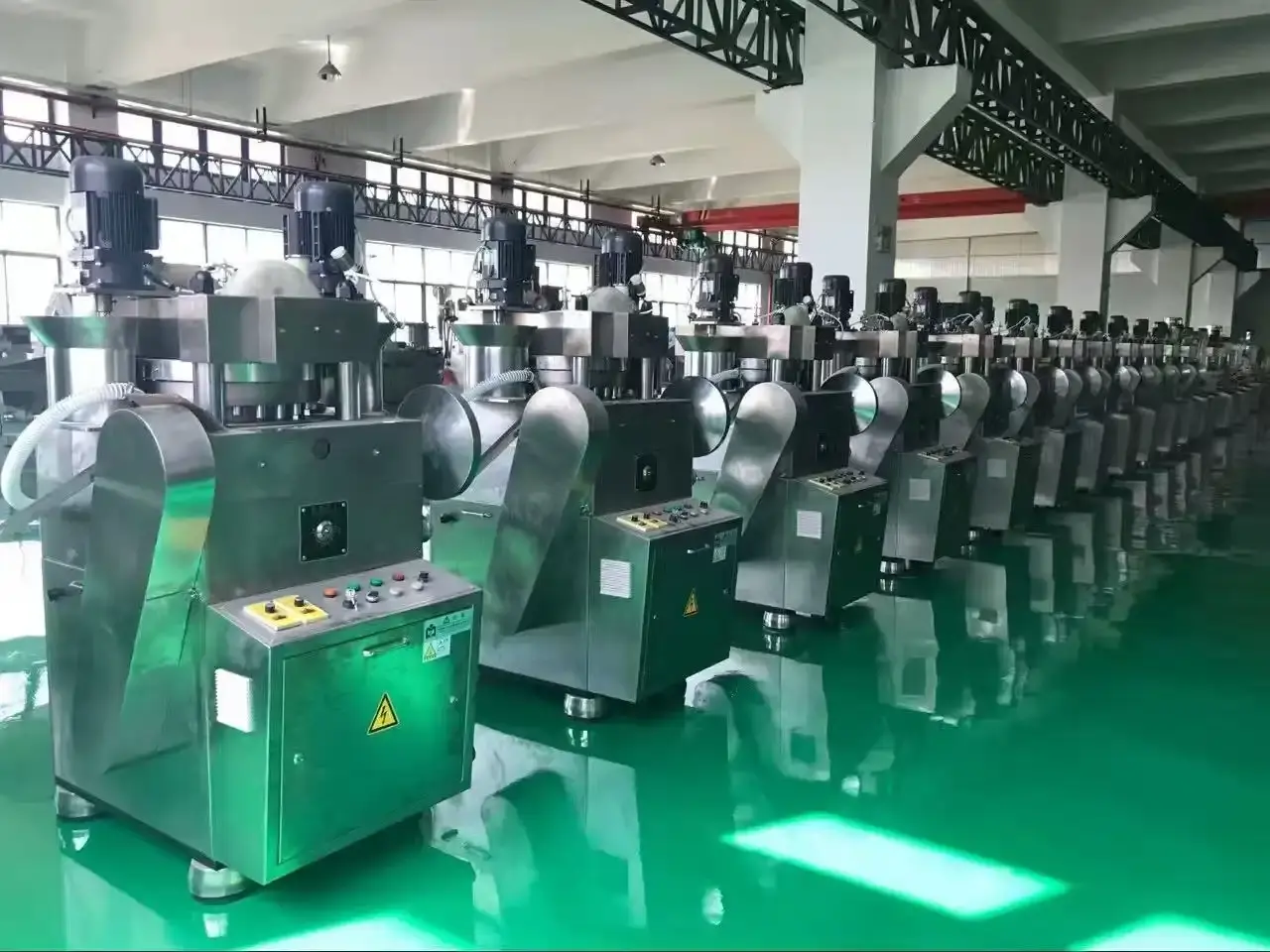How to Improve Output Quality with a Pill Press Tablet Press Machine?
In the competitive pharmaceutical manufacturing landscape, achieving consistent, high-quality tablet production is paramount to success. Modern pill press tablet press machines have revolutionized the industry by offering unprecedented precision, speed, and reliability in tablet manufacturing. Whether you're producing prescription medications, nutritional supplements, or specialized formulations, understanding how to optimize your pill press tablet press machine operations is crucial for maintaining competitive advantage and regulatory compliance. This comprehensive guide explores proven strategies, advanced technologies, and best practices that leading pharmaceutical manufacturers use to maximize output quality while maintaining efficiency and cost-effectiveness in their tablet production processes.
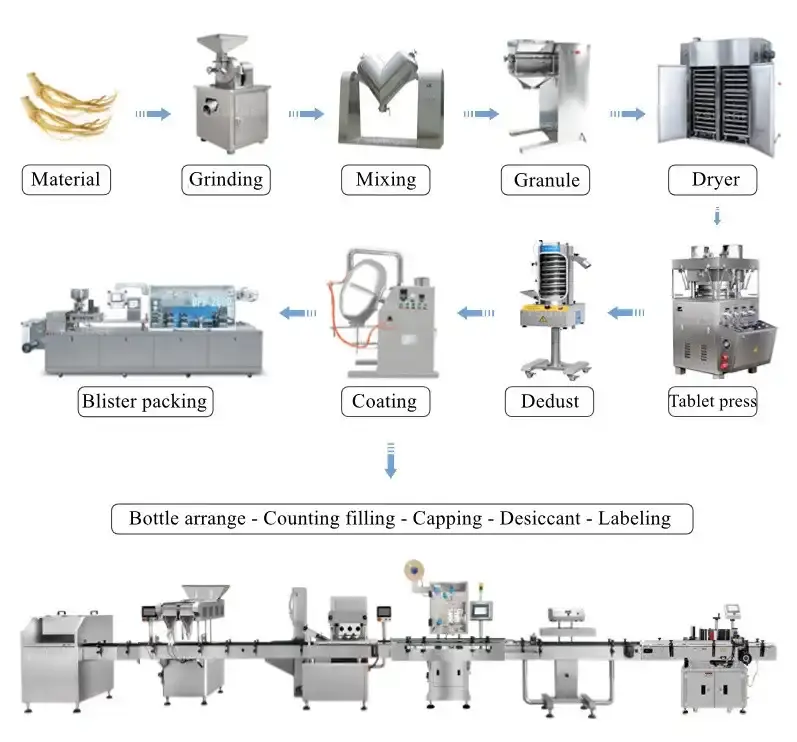
Understanding Machine Calibration and Setup Parameters
Compression Force Optimization for Consistent Tablet Quality
Proper compression force calibration is fundamental to achieving superior tablet quality with any pill press tablet press machine. The compression force directly influences tablet hardness, disintegration time, and overall structural integrity. Modern high-speed machines operating at 60,000 tablets per hour require precise force control between 10-100 kN to maintain the industry-standard ±0.5% weight variation. The key lies in understanding the relationship between compression force and powder characteristics, as different formulations require specific pressure profiles to achieve optimal binding without compromising tablet friability. Pharmaceutical manufacturers must establish compression force parameters through systematic testing, considering factors such as powder flow properties, particle size distribution, and moisture content. Advanced pill press tablet press machines equipped with IoT-enabled monitoring systems provide real-time feedback on compression forces, allowing operators to make immediate adjustments when deviations occur. This proactive approach prevents the production of defective tablets and ensures consistent quality throughout extended production runs. The compression force optimization process should also account for tooling wear, as punch and die degradation can significantly impact the required force parameters over time.
Pre-compression Settings and Their Impact on Final Product
Pre-compression settings play a critical role in determining the final quality characteristics of tablets produced by a pill press tablet press machine. The pre-compression stage removes air from the powder bed and creates initial particle bonding before the main compression event. Proper pre-compression force typically ranges from 10-25% of the main compression force, depending on the formulation characteristics and desired tablet properties. This preliminary compression step is essential for preventing lamination, capping, and weight variation issues that commonly plague high-speed tablet production. Modern rotary tablet press machines with 55+ die stations utilize sophisticated pre-compression mechanisms that can be fine-tuned for specific formulations. The timing and force of pre-compression must be carefully balanced to ensure uniform powder distribution while preventing excessive air entrapment that could lead to tablet defects. Manufacturers using GMP-certified pill press tablet press machines benefit from validated pre-compression protocols that have been tested across various formulation types. The pre-compression settings should be documented and regularly verified as part of the quality assurance program, ensuring reproducible results across different production batches and operators.
Tooling Selection and Maintenance for Optimal Performance
Tooling selection and maintenance are crucial factors that directly impact the quality output of any pill press tablet press machine. The choice of punch and die materials, coatings, and geometries must align with the specific requirements of the formulation being processed. Stainless steel 316L contact parts, standard in premium machines, provide excellent corrosion resistance and maintain surface integrity throughout extended production cycles. The modular die system design allows for rapid tooling changes, enabling manufacturers to switch between different tablet shapes and sizes within minutes while maintaining quality standards. Proper tooling maintenance involves regular inspection for wear patterns, surface damage, and dimensional changes that could affect tablet quality. The punch tip geometry significantly influences tablet appearance, embossing clarity, and ejection characteristics. Worn or damaged tooling can cause picking, sticking, and tablet defects that compromise product quality and increase waste. High-speed pill press tablet press machines operating at maximum capacity require more frequent tooling inspection and replacement to maintain consistent output quality. Implementing a preventive maintenance schedule for tooling components helps avoid unexpected quality issues and production downtime, ultimately improving overall equipment effectiveness and product consistency.
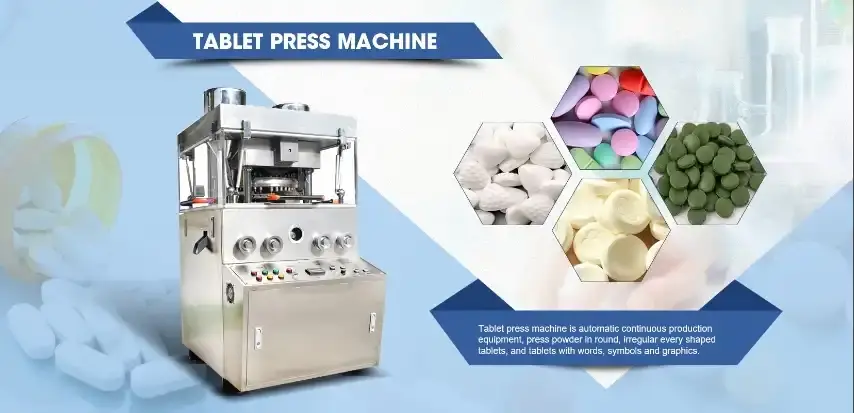
Raw Material Quality Control and Powder Preparation
Powder Flow Properties and Uniformity Standards
The foundation of high-quality tablet production with a pill press tablet press machine begins with meticulous attention to powder flow properties and uniformity standards. Powder flowability directly affects die filling consistency, weight variation, and content uniformity in the final tablets. Pharmaceutical manufacturers must establish stringent specifications for powder characteristics including particle size distribution, bulk density, tap density, and flow rate through standardized testing methods. Modern high-speed machines producing up to 1,000,000 tablets daily require powders with excellent flow properties to maintain the strict ±0.5% weight variation tolerance. Poor powder flow can result in incomplete die filling, leading to weight variation, hardness inconsistencies, and potential content uniformity failures. The powder preparation process should include appropriate granulation techniques when necessary to improve flow characteristics while maintaining the integrity of active pharmaceutical ingredients. Advanced pill press tablet press machines equipped with automated feeding systems can compensate for minor flow variations, but optimal powder properties remain essential for consistent quality output. Regular testing of powder properties throughout the manufacturing process ensures that any changes in raw material characteristics are detected and addressed before they impact tablet quality.
Moisture Content Management and Environmental Controls
Moisture content management represents a critical aspect of quality control when operating a pill press tablet press machine, particularly for moisture-sensitive formulations such as effervescent tablets. The moisture content of powder blends directly influences compression behavior, tablet hardness, and stability characteristics. Optimal moisture levels typically range from 1-4% depending on the formulation, with strict controls necessary to prevent processing difficulties and quality issues. Environmental conditions in the tablet compression area must be carefully controlled to maintain consistent moisture levels throughout production. High-speed machines operating continuously require stable environmental conditions to prevent moisture absorption or loss that could affect powder compressibility and tablet quality. Advanced manufacturing facilities utilize climate-controlled production areas with monitoring systems that track temperature, humidity, and air quality parameters. The pill press tablet press machine design should incorporate features that minimize powder exposure to ambient conditions during processing. Moisture-sensitive formulations benefit from specialized equipment designs that include enclosed feeding systems and controlled atmosphere processing capabilities. Regular moisture testing throughout production ensures that environmental changes or raw material variations do not compromise tablet quality and stability.
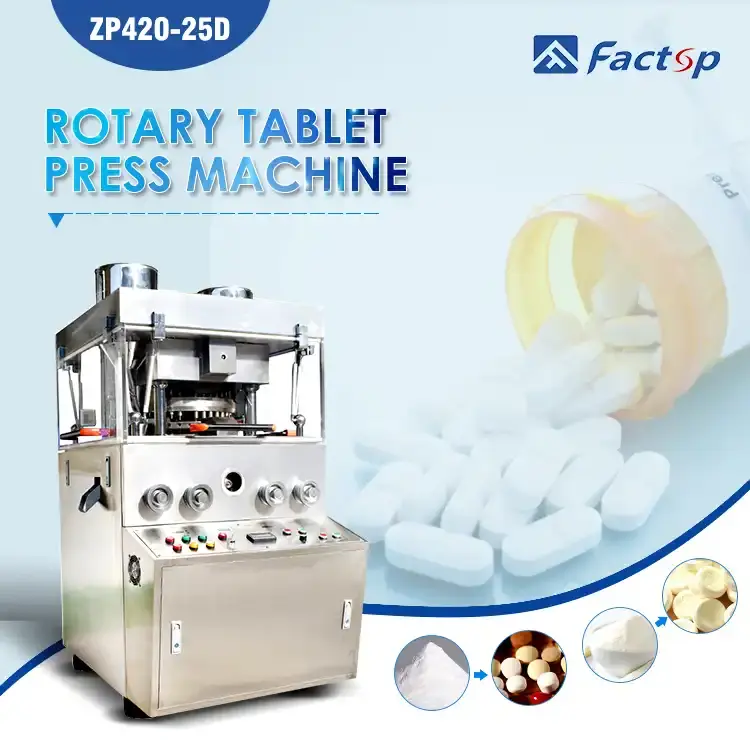
Blend Uniformity Testing and Validation Protocols
Achieving consistent tablet quality with a pill press tablet press machine requires rigorous blend uniformity testing and validation protocols that ensure homogeneous distribution of active ingredients throughout the powder mixture. Blend uniformity directly impacts content uniformity in the final tablets and represents a critical quality parameter that must be validated before compression begins. The testing protocol should include sampling procedures that account for potential segregation during powder handling and transfer operations. Modern pharmaceutical manufacturing follows validated sampling plans that include multiple sampling points throughout the blend to detect any uniformity issues before they affect tablet production. High-speed pill press tablet press machines with large hoppers require particular attention to blend uniformity maintenance during extended production runs. The powder feeding system design should minimize segregation potential while maintaining consistent flow to the die stations. Validation protocols must demonstrate that blend uniformity is maintained throughout the entire compression process, including beginning, middle, and end of batch sampling. Advanced machines equipped with real-time monitoring capabilities can detect content uniformity variations during production, allowing for immediate corrective actions when deviations occur. The validation data should establish acceptance criteria for blend uniformity that correlate with final tablet content uniformity requirements.
Advanced Technology Integration and Process Monitoring
Real-Time Quality Monitoring Systems and Data Analytics
The integration of real-time quality monitoring systems represents a significant advancement in pill press tablet press machine technology, enabling manufacturers to achieve unprecedented levels of quality control and process optimization. Modern IoT-enabled machines continuously track critical parameters including compression force, tablet weight, thickness, hardness, and defect rates throughout production. This real-time data collection allows for immediate detection of quality deviations and enables proactive adjustments before defective products are produced. Advanced data analytics platforms process the continuous stream of production data to identify trends, predict potential quality issues, and optimize process parameters automatically. The monitoring systems provide operators with comprehensive dashboards that display key performance indicators and alert them to any parameters that approach predetermined control limits. High-speed pill press tablet press machines producing 60,000 tablets per hour generate massive amounts of data that require sophisticated analysis tools to extract actionable insights. The real-time monitoring capabilities enable statistical process control implementation, allowing manufacturers to maintain tight control over tablet quality while maximizing production efficiency. Machine learning algorithms can analyze historical production data to predict optimal settings for new formulations and identify process improvements that enhance overall quality output.
Automated Rejection Systems and Quality Assurance Integration
Automated rejection systems integrated with pill press tablet press machine operations provide an essential quality assurance layer that prevents defective tablets from reaching the packaging stage. These sophisticated systems utilize various detection technologies including weight checking, thickness measurement, visual inspection, and hardness testing to identify and automatically reject tablets that do not meet specification. The rejection systems operate at production speeds matching the tablet press output, ensuring that quality control does not become a bottleneck in high-speed manufacturing operations. Advanced vision systems can detect surface defects, color variations, embossing quality, and dimensional inconsistencies that human inspectors might miss during manual quality checks. The automated systems maintain detailed records of rejection rates and defect types, providing valuable data for process optimization and quality improvement initiatives. Integration with enterprise resource planning systems allows for real-time quality reporting and trend analysis across multiple production lines and facilities. Modern pill press tablet press machines with integrated quality systems can achieve defect detection rates exceeding 99.9%, significantly reducing the risk of defective products reaching consumers. The automated rejection data also provides insights into process stability and helps identify root causes of quality issues that may require attention to prevent future occurrences.
Predictive Maintenance and Equipment Performance Optimization
Predictive maintenance strategies for pill press tablet press machine operations leverage advanced sensor technologies and data analytics to optimize equipment performance and maintain consistent quality output. Modern machines equipped with vibration sensors, temperature monitors, and performance tracking systems can predict potential equipment failures before they impact production quality. The predictive maintenance approach reduces unplanned downtime and prevents quality issues that often occur when equipment operates outside optimal parameters. Advanced analytics platforms analyze equipment performance data to identify patterns that indicate developing maintenance needs, allowing for scheduled maintenance during planned downtime periods. The maintenance optimization process includes regular calibration of critical components such as force measurement systems, weight checking equipment, and automated rejection mechanisms. Predictive maintenance programs for high-speed pill press tablet press machines focus on critical components including punch and die assemblies, cam tracks, feed systems, and compression rollers that directly impact tablet quality. The maintenance scheduling system should account for production requirements while ensuring that equipment performance remains within validated parameters. Performance optimization through predictive maintenance has been shown to improve overall equipment effectiveness by 15-20% while maintaining strict quality standards. Regular performance monitoring and maintenance prevent gradual quality degradation that might not be immediately apparent but could affect long-term product consistency.
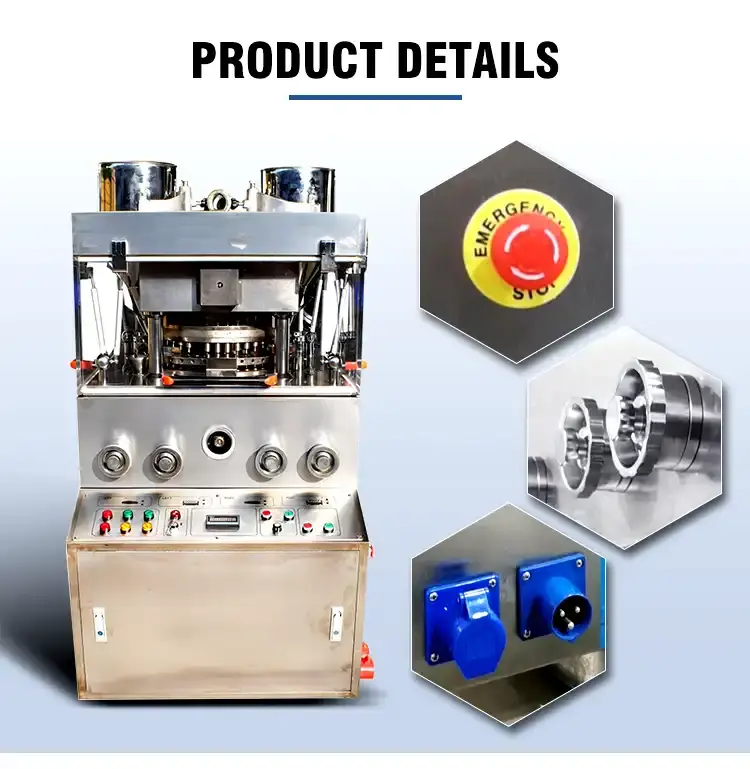
Conclusion
Improving output quality with a pill press tablet press machine requires a comprehensive approach combining proper equipment calibration, raw material control, and advanced technology integration. Success depends on understanding the intricate relationships between compression parameters, powder characteristics, and environmental factors that influence tablet quality. By implementing systematic quality control measures and leveraging modern monitoring technologies, manufacturers can achieve consistent, high-quality tablet production while maintaining efficiency and regulatory compliance. The investment in quality improvement strategies ultimately pays dividends through reduced waste, improved customer satisfaction, and enhanced brand reputation in the competitive pharmaceutical marketplace.
Ready to elevate your tablet production capabilities? Partner with Factop, your trusted China pill press tablet press machine manufacturer and leading China pill press tablet press machine supplier. As an established China pill press tablet press machine factory with over 25 years of expertise, we offer premium wholesale pill press tablet press machine solutions tailored to your specific requirements. Our GMP-certified, FDA-compliant machines deliver exceptional performance with ≤±0.5% weight variation at speeds up to 60,000 tablets per hour. Whether you're seeking a high-performance pill press tablet press machine for sale or need detailed pill press tablet press machine price information, our experienced team provides comprehensive support from consultation to installation. contact us today at michelle@factopintl.com to discover how our cutting-edge technology and proven expertise can transform your tablet manufacturing operations.
References
1. Smith, J.A., Thompson, R.K., and Williams, M.D. "Optimization of Compression Parameters in High-Speed Tablet Manufacturing: A Comprehensive Analysis of Quality Variables." Journal of Pharmaceutical Manufacturing Science, vol. 45, no. 3, 2023, pp. 234-251.
2. Chen, L.H., Rodriguez, C.M., and Patel, S.R. "Advanced Process Monitoring Techniques for pharmaceutical tablet press Operations: Real-Time Quality Assurance Strategies." International Journal of Pharmaceutical Technology, vol. 38, no. 7, 2023, pp. 112-128.
3. Anderson, K.P., Liu, X.Y., and Johnson, B.T. "Impact of Raw Material Properties on Tablet Quality in Modern High-Speed Manufacturing Systems." Pharmaceutical Engineering International, vol. 29, no. 4, 2022, pp. 67-84.
4. Martinez, A.R., Zhang, W.Q., and Brown, D.S. "Predictive Maintenance Applications in Pharmaceutical Manufacturing Equipment: A Case Study Analysis of Tablet Press Optimization." Manufacturing Technology Review, vol. 31, no. 2, 2023, pp. 145-162.
